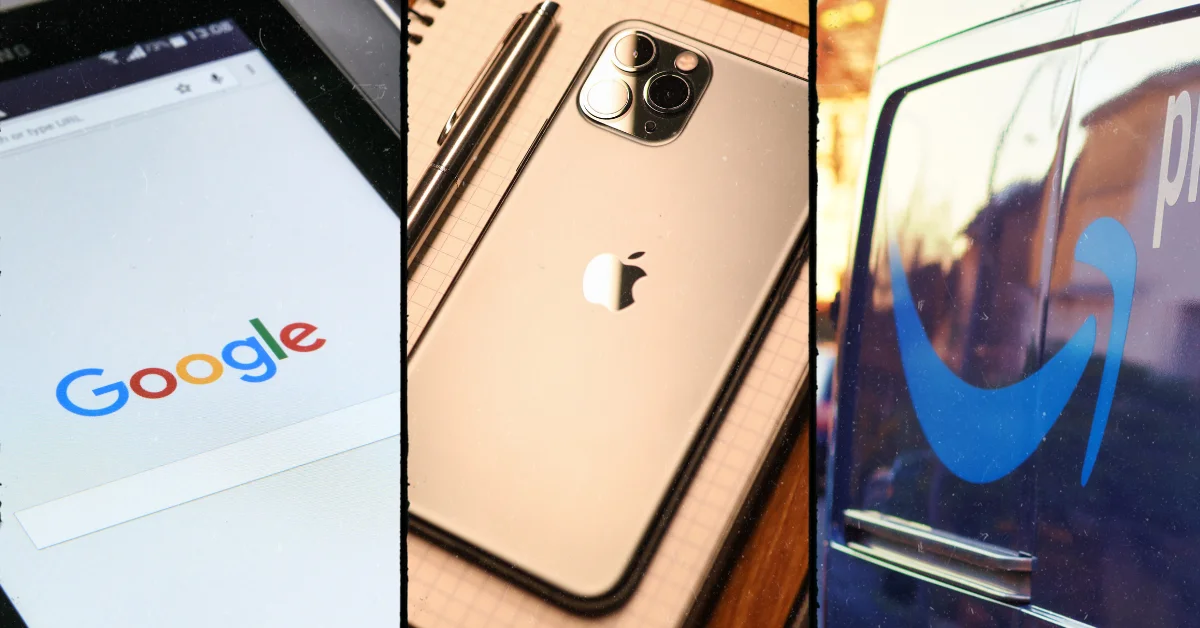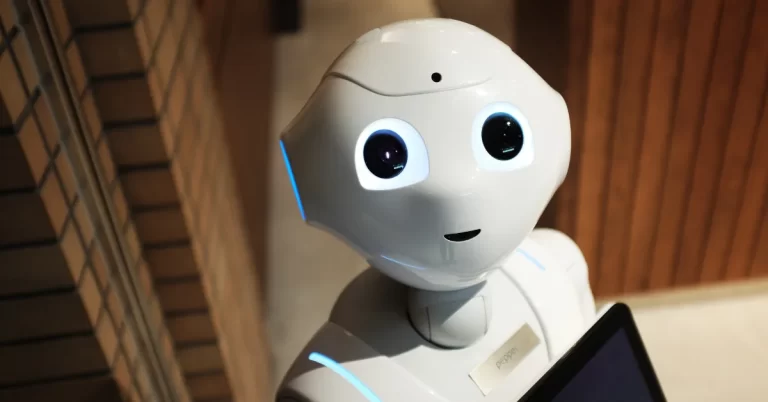Patent Trends in Big Tech: What Google, Apple, and Amazon Are Protecting
Ever wonder what the tech giants are working on behind closed doors? One of the best ways to peek into their future plans is through their patent filings. As a patent agent who’s helped companies navigate the complex world of intellectual property, I’ve had a front-row seat to the strategies of tech’s biggest players. Their patent portfolios tell a fascinating story about where technology is headed and what these companies consider most valuable.
In this post, I’ll take you on a tour of the patent strategies at Google, Apple, and Amazon—three companies that are shaping our technological future. What are they patenting? Why? And what does it tell us about their long-term plans? Let’s dive in.
The Patent Arms Race: By the Numbers
First, let’s understand the sheer scale of patent activity at these companies. The numbers are staggering:
- Google/Alphabet: Over 50,000 patents worldwide
- Apple: More than a whopping 85,000 patents globally
- Amazon: Roughly 40,000 patents and growing rapidly
Each of these companies files thousands of new patent applications every year, investing billions in R&D to fuel their innovation pipelines. But raw numbers only tell part of the story. The real insights come from looking at what they’re patenting.
Google: From Search to AI Dominance
Google’s patent portfolio has evolved dramatically since its early days as a search engine company. Today, their patent strategy reveals a company positioning itself at the center of an AI-powered future.
The AI Foundation
Artificial intelligence represents the largest and fastest-growing segment of Google’s patent portfolio. Their patents cover:
- Machine Learning Algorithms: Novel training methods, specialized neural network architectures, and efficiency improvements
- Natural Language Processing: Technologies that help computers understand and generate human language
- Computer Vision: Systems that can identify objects, people, and actions in images and video
One particularly interesting patent involves a technique for making AI systems explain their decisions—a crucial capability as AI takes on more important roles in society. This focus on “explainable AI” shows Google thinking beyond just capabilities to addressing the broader implications of AI technology.
Beyond the Phone: Ambient Computing
Google’s hardware patents reveal a vision of computing that extends far beyond smartphones. They’re building a patent fortress around:
- Smart Home Devices: Technologies that turn your entire home into an intelligent, responsive environment
- Wearable Technology: Beyond watches to smart clothing, health monitors, and AR glasses
- Voice Interfaces: Making conversation with machines as natural as talking to a person
A patent that caught my attention describes a system where multiple Google devices in your home work together seamlessly, sharing context and information to provide better responses no matter which device you’re interacting with. This points to Google’s vision of “ambient computing”—technology that surrounds you, ready to help whenever needed.
Health and Wellness Tech
Google has been quietly building a significant patent portfolio in health technology:
- Medical Imaging Analysis: Using AI to help detect diseases in X-rays, MRIs, and other medical images
- Health Monitoring: From smartwatch sensors to more specialized devices
- Health Data Management: Secure systems for storing and analyzing personal health information
One particularly forward-looking patent involves using smartphone cameras to detect subtle changes in skin color that might indicate cardiovascular issues—potentially turning everyday devices into powerful diagnostic tools.
Apple: Hardware, Software, and the User Experience
Apple’s patent strategy reflects its integrated approach to products, with strong protection for both hardware innovations and the software that brings devices to life.
The Next Generation of Devices
Apple’s hardware patents offer glimpses of products that might shape our future:
- Foldable Devices: Multiple patents on flexible displays and hinges suggest Apple is seriously exploring foldable iPhones or iPads
- AR/VR Hardware: Comprehensive coverage of headset technologies, display systems, and interaction methods
- Advanced Materials: New composites, coatings, and manufacturing techniques for stronger, lighter devices
One recent patent describes a system where an Apple Watch could identify the wearer by the unique electrical properties of their wrist—potentially eliminating the need for passwords while improving security.
Security and Privacy
Apple has positioned itself as a privacy champion, and their patents back this up:
- Biometric Security: Going beyond Face ID to new authentication methods
- Privacy-Preserving AI: Techniques for machine learning that keep personal data on your device
- Secure Communications: Enhanced encryption and anti-tracking technologies
A particularly clever patent describes a display technology that limits viewing angles when privacy mode is activated—preventing shoulder-surfers from seeing sensitive information while allowing the user to view their screen normally.
Health and Wellness Ecosystem
Like Google, Apple is making big bets on health technology:
- Advanced Health Sensors: New ways to measure everything from blood pressure to glucose levels non-invasively
- Mental Health Monitoring: Systems that can detect stress, anxiety, and other psychological states
- Health Records Integration: Technologies to securely connect Apple devices with medical systems
One ambitious patent describes a system where Apple devices could detect early signs of depression or cognitive decline through subtle changes in user behavior—potentially allowing for earlier intervention and treatment.
Amazon: Commerce, Cloud, and Connected Life
Amazon’s patent portfolio reflects its evolution from an online bookstore to a tech powerhouse spanning e-commerce, cloud computing, and smart home technology.
Reimagining Retail
Amazon continues to patent technologies that transform how we shop:
- Automated Stores: Systems for cashierless shopping experiences like Amazon Go
- Delivery Innovations: From drone delivery to automated fulfillment centers
- Virtual Try-On: Technologies that let customers see how products would look on them before purchasing
One fascinating patent describes a system where Amazon could ship items to you before you even order them, based on predictive algorithms that anticipate your needs—a concept they call “anticipatory shipping.”
Cloud Computing Infrastructure
As the leader in cloud services, Amazon aggressively patents cloud innovations:
- Server Technology: Hardware and software for more efficient data centers
- Network Optimization: Systems that improve data transfer speeds and reliability
- Cloud Security: Technologies to protect customer data and applications
A recent patent covers a technique for automatically scaling computing resources in response to demand spikes, potentially saving customers money while maintaining performance—showing how Amazon continues to innovate on cloud fundamentals.
Voice and Smart Home
Amazon’s Alexa-related patents reveal their vision for voice-controlled environments:
- Voice Recognition Improvements: Better accuracy in noisy environments and with different accents
- Natural Conversations: Systems that maintain context across multiple questions
- Smart Home Orchestration: Technologies that coordinate multiple devices to work together
One particularly interesting patent describes a system where Alexa could detect if you’re getting sick by noticing changes in your voice—and then offer to order medicine or adjust your schedule. This shows how Amazon envisions voice assistants becoming more proactive and helpful in our daily lives.
Cross-Company Battlegrounds: Where Competition Is Fiercest
Some of the most intense patent activity happens in areas where these giants directly compete. By looking at where their patent portfolios overlap, we can identify the technologies they all consider crucial for the future:
Artificial Intelligence
All three companies are heavily patenting AI technologies, with slightly different emphases:
- Google: Core AI research and services
- Apple: On-device AI that preserves privacy
- Amazon: AI for commerce and cloud services
This three-way patent race is creating a complex landscape where each company must navigate the others’ intellectual property while building their own AI systems.
Augmented and Virtual Reality
AR/VR represents another major battleground:
- Google: Software and cloud services for AR experiences
- Apple: Integrated hardware-software systems
- Amazon: Shopping and entertainment applications
With the AR/VR market potentially worth hundreds of billions in the coming decade, these patents represent crucial positioning for the next computing platform.
Autonomous Systems
Self-driving cars and other autonomous systems feature prominently:
- Google/Waymo: Comprehensive coverage of autonomous vehicle technology
- Apple: Project Titan patents covering vehicles and mobility services
- Amazon: Delivery robots, warehouse automation, and logistics systems
One area of particular overlap is environmental perception—how machines understand the world around them—with all three companies patenting similar but distinct approaches to this fundamental challenge.
What These Patent Trends Tell Us About the Future
Looking across these patent portfolios, several clear trends emerge that tell us where technology is headed:
1. The Physical and Digital Worlds Are Merging
Patents increasingly cover technologies that bridge the gap between physical and digital reality:
- Sensors that monitor the physical world
- Systems that overlay digital information onto physical spaces
- Devices that can manipulate physical objects based on digital instructions
This convergence will likely accelerate in the coming years, leading to environments that are simultaneously physical and digital.
2. Ambient Intelligence Is Coming
All three companies are patenting technologies for computing systems that:
- Are always available but not intrusive
- Understand natural human communication
- Anticipate needs rather than just responding to commands
- Coordinate across multiple devices seamlessly
These patents point toward a future where computing fades into the background while becoming more helpful and pervasive.
3. Health Tech Is a Major Frontier
The volume of health-related patents from companies traditionally focused on consumer technology signals a major shift:
- Consumer devices gaining medical-grade capabilities
- AI systems that can detect health issues earlier
- Platforms that connect personal health data with healthcare systems
This trend suggests that tech companies see healthcare as both a massive market opportunity and an area where their technologies can make a significant positive impact.
What This Means for Innovation
The aggressive patenting by tech giants has important implications for the broader innovation ecosystem:
For Startups and Smaller Companies
The dense patent landscape created by Google, Apple, and Amazon creates both challenges and opportunities:
- Challenge: Navigating potential patent infringement risks
- Opportunity: Finding specific niches where the giants aren’t focusing
- Strategy: Consider defensive publication or focused patenting in your core area
One startup I worked with developed a novel approach to natural language processing. Rather than trying to compete directly with Google’s broad NLP patents, they focused on a specific industry application where they could build a defensible position.
For Consumers
The fierce patent competition ultimately benefits consumers through:
- Faster innovation as companies race to develop and protect new technologies
- More choices as companies develop differentiated approaches to similar problems
- Potential interoperability challenges when companies patent competing standards
For the Patent System Itself
The sheer volume of tech patents is straining the patent system:
- Patent offices struggle to find examiners with cutting-edge technical knowledge
- The quality of some patents suffers due to the complexity of the technology
- The line between patentable inventions and abstract ideas continues to blur
Looking Ahead: The Next Patent Frontiers
Based on recent patent filings, here are the areas where we’ll likely see intense patent activity in the coming years:
Quantum Computing
As quantum computing moves from research to practical applications, expect a surge in patents covering:
- Quantum hardware improvements
- Error correction techniques
- Quantum algorithms for specific problems
- Hybrid classical-quantum systems
Climate Tech
Patents related to environmental monitoring, energy efficiency, and sustainability are increasing rapidly:
- Carbon capture and utilization
- Advanced energy management
- Climate modeling and prediction
- Sustainable materials and processes
Brain-Computer Interfaces
As direct connections between minds and machines become more sophisticated, patents are emerging for:
- Non-invasive brain monitoring
- Thought-to-text translation
- Direct neural control of devices
- Therapeutic applications for neurological conditions
Final Thoughts
The patent portfolios of Google, Apple, and Amazon offer a fascinating window into the future of technology. Behind the legal language and technical diagrams lies a vision of computing that is more intelligent, more integrated with our physical world, and more attuned to human needs.
For those of us watching the tech industry, these patents provide valuable clues about strategic priorities and future products. They reveal not just what these companies are protecting, but what they believe will matter most in the years ahead.
While patents don’t always lead directly to products, they show where these tech giants are placing their long-term bets. And if history is any guide, many of the technologies they’re patenting today will become part of our everyday lives tomorrow.
As a patent agent with experience in technology intellectual property, I’ve helped many clients navigate this complex landscape. While this article provides general insights into patent trends, each situation involves unique considerations. For specific advice about your innovations or patent strategy, consult with a registered patent attorney or agent experienced in your field of technology.






